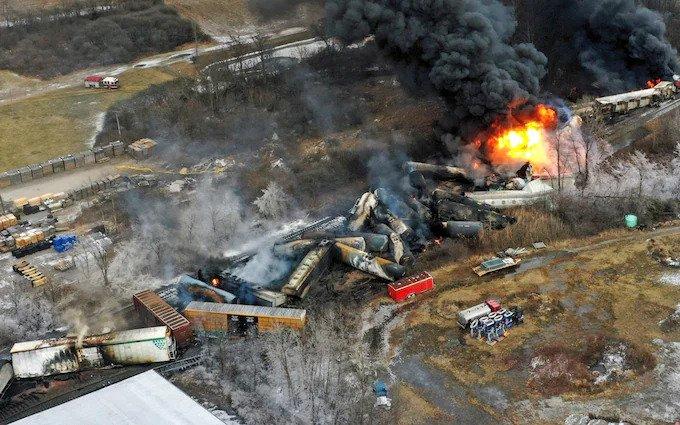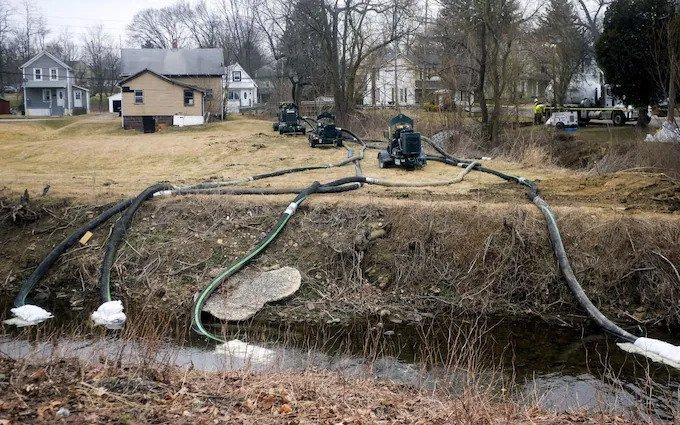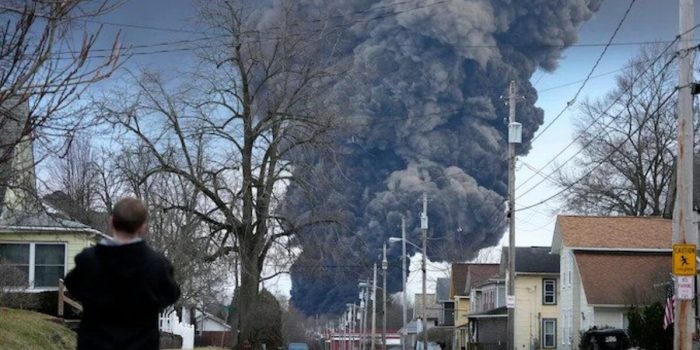Nearly 45,000 animals were killed after a train carrying toxic chemicals derailed in Ohio, according to environmental officials. The crash released large amounts of toxic chemicals into the air, water, and ground, forcing evacuations as residents feared for their health.
Officials seeking to avoid an uncontrolled blast intentionally released and burned toxic vinyl chloride from five rail cars, sending flames and black smoke into the sky.
The Ohio Department of Natural Resources said that 43,700 aquatic species died over a five-mile radius following the incident on February 3 which is more than ten times the initial estimate.
ODNR said it worked with a third party, EnviroScience Inc., to collect data on the number of dead fish.

Initial estimates from earlier this month indicated around 3,500 fish died across 7.5 miles of streams. ODNR wildlife officers located dead fish in Leslie Run, Bull Creek, and a portion of the North Fork of Beaver Creek when the derailment occurred.
New estimates provided by ODNR show that number is significantly higher—with more than 38,000 minnows and 5,500 other types of fish dead, totaling more than 43,000 dead fish. The fish were all located within a 5-mile span from the derailment site.
News 5 Cleveland notes that so far, the government has not reported any land-walking mammal deaths — but folks who live near the disaster site have said that their animals, including chickens, cats, and foxes, have become sick and died in the wake of the derailment.
At a news conference in Washington, Jennifer Homendy, head of the National Transportation Safety Board, said that the crash was “100 percent preventable”.
“We call things accidents,” she said. “There is no accident. Every single event we investigate is preventable.”

Investigators said the temperature of the failed wheel bearing increased by 215 degrees in a span of 30 miles but did not reach the temperature threshold that Norfolk Southern had set for an alarm to go off until just before the crash.
ODNR and the Environmental Protection Agency will continue to monitor the area, but the cleanup of the dead fish in the streams is complete. There may be a handful of dead fish left in the streams, but they don’t cause an ecological concern at this point, officials said.
“Because the chemicals were contained, we haven’t seen any additional signs of aquatic life suffering,” she said. There isn’t a worry at this point about further chemical contamination.


